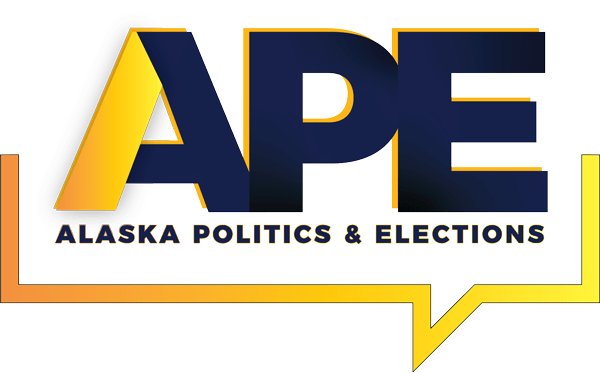After reports of a small, magnitude 5.1 seismic event in the vicinity of North Korea’s Punggye-ri nuclear test site on Tuesday, the state-controlled North Korean news service announced a successful test of a miniaturized hydrogen bomb — which it called a “hydrogen bomb for justice.” A North Korean television anchor said the test elevated North Korea’s “nuclear might to the next level.”
It is very unlikely that this was a test of a true H-bomb, a thermonuclear device in which a primary fission reaction ignites a much larger secondary fusion/fission reaction. The technical challenges of constructing a true H-bomb, which could be over 1000 times more powerful than North Korea’s previous three nuclear tests, are far beyond North Korean capabilities. The real meaning of this nuclear test, regardless of its type, may be an attempt by North Korea to get a nuclear deal similar to Iran’s before President Obama leaves office.
It is possible this was a test of a “boosted-fission” nuclear weapon. In such a device, a small fusion reaction of two hydrogen isotopes, deuterium and tritium, is initiated in the core. This reaction releases a flood of high-energy neutrons that causes a more efficient fission reaction by the weapon’s enriched uranium or plutonium fuel resulting in an explosive yield several times higher. Boosted fission enables states to construct smaller and lighter nuclear weapons and to make more efficient use of scarce nuclear fuel.
North Korea has been claiming for several years that it was engaged in nuclear-fusion research. In 2010, North Korean officials even said that their nation had mastered nuclear fusion. In January 2013, the Japanese newspaper Asahi Shimbun reported that a “new higher level nuclear device” that North Korea was threatening to test might be a boosted-fission nuclear device. Last month, North Korean leader Kim Jong-Un said his country had developed a hydrogen bomb.
Although most experts dismissed North Korea’s nuclear fusion claims as bravado, a boosted-fission nuclear test would be the next step in the development of a North Korean nuclear-weapons program. Building such a device would be technically challenging. India, which has a more advanced nuclear-weapons program than North Korea, reportedly conducted a failed test of a booted-fission nuclear device in 1998.
Determining what type of nuclear device this was will be difficult. The United States and the International Atomic Energy Agency (IAEA) will try to analyze air samples for evidence of xenon gas, a by-product of nuclear explosions. This will help determine whether the explosion was nuclear and possibly whether enriched uranium or plutonium fuel was used. It probably will not determine whether North Korea detonated a boosted-fission device.
The small 5.1 magnitude of Tuesday’s seismic event suggests either this was not a boosted-fission device or that the boosted-fission reaction failed. 5.1 was the same magnitude of the seismic event that accompanied North Korea’s February 12, 2013 nuclear test and North Korea’s 2009 and 2006 nuclear tests caused seismic events measuring 4.3 and 4.7, respectively.
North Korea’s nuclear tests appear to represent a pattern of trying to get the world’s attention in order to force a resumption of multilateral talks that can be used to extract concessions from the United States and regional states. This could be the case with the North’s latest nuclear test. The North Korean regime knows President Obama entered office hoping to get nuclear agreements with both North Korea and Iran. The North Korean government probably views the 2015 nuclear deal with Iran as a great victory for Tehran and is hoping this test will lure the Obama administration into resuming nuclear talks so it can get a similar deal.
Regardless of North Korea’s motivations for Tuesday’s nuclear test and whether it was a test of a boosted-fission nuclear device, this is still a very dangerous development. Every time North Korea conducts a nuclear test, it gains more experience and data for its effort to construct nuclear warheads for its ballistic missiles. North Korea has made major strides in its missile program over the last ten years, including the December 2012 launch of a rocket to place a satellite in orbit, which most experts believe was actually a test of an ICBM capable of hitting the United States.
I believe there is a strong possibility that North Korea and Iran are collaborating on their nuclear-weapon programs and that Tehran will benefit from any knowledge gained from this nuclear test. Iranian observers reportedly were present at previous North Korean nuclear and long-range missile tests. Determining Iran’s possible role in the recent North Korean nuclear test will be a priority for U.S. intelligence agencies.
Former CIA director James Woolsey and former CIA analyst Peter Pry believe North Korea and Iran may be developing small nuclear warheads to use as electromagnetic pulse (EMP) weapons to target the U.S. electrical grid. I agree with these concerns since EMP weapons are a way that rogue states with small nuclear-weapons programs could actually attack states with far superior military capabilities by greatly amplifying the destructive power of these weapons. Ted Koppel recently wrote about how devastating an EMP attack on the United States would be in his new book, Lights Out: A Cyberattack, A Nation Unprepared, Surviving the Aftermath.
Making this situation worse is the absence of American global leadership under President Obama. “Leading from behind,” the disastrous nuclear deal with Iran, the deteriorating security situation in Afghanistan, the president’s dismissal of the global threat from ISIS, and numerous red lines drawn — and later ignored — have severely undermined America’s credibility on the world stage. The North Korean regime knows this. Its latest nuclear test may be an attempt to take advantage of Mr. Obama’s weakness before he leaves office.
— Fred Fleitz is senior vice president for policy and programs for the Center for Security Policy. He followed the Iranian and North Korean nuclear programs for the CIA, the State Department, and the House Intelligence Committee during his 25-year government career. He can be found on Twitter @fredfleitz.











